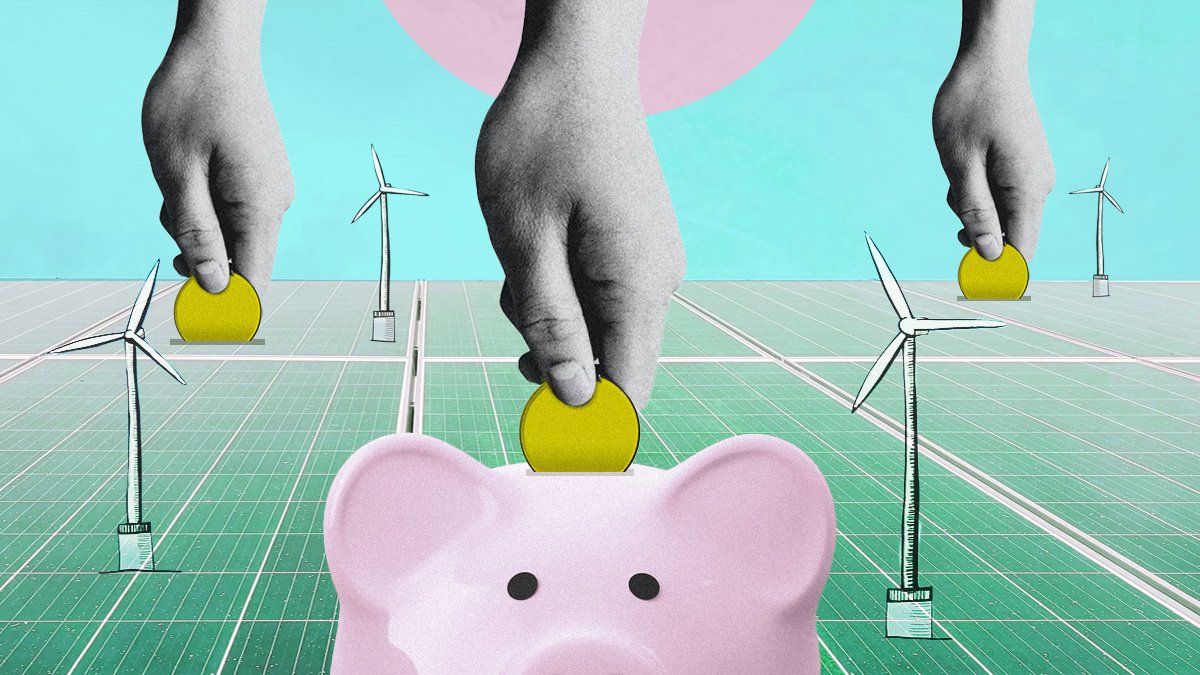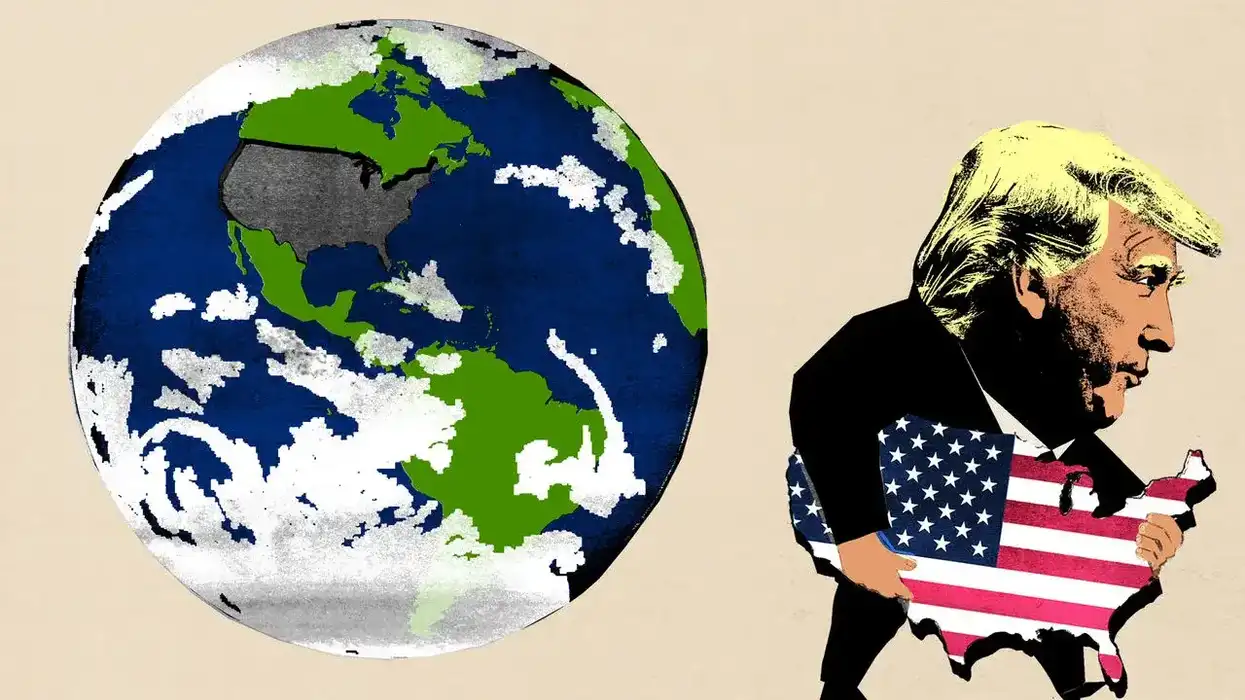Global leaders are gathering in Dubai for COP28, the 28th annual United Nations climate summit, starting tomorrow through Dec. 12. But before the meeting even begins, I can already tell you one thing: Just like every COP that came before it, COP28 will fail to resolve the central debate on “solving” climate change.
At the heart of this failure lies a trillion-dollar roadblock: disagreement between developed and developing countries over who’s to blame for the problem – and who should foot the bill to fix it. The US and Europe blame Chinese and Indian coal plants and call for their immediate phase-down. China and developing countries blame the West’s historical emissions and insist on compensation for their mitigation and adaptation efforts. Africans and Indians assert their right to develop their economies as Westerners did. Vulnerable nations demand reparations to cope with the harmful consequences of the global warming that’s already baked in. Neither side wants to make concessions.
While they bicker, the planet is cooking. Cumulative emissions since 1850 – when humans started burning fossil fuels at scale – have already caused global temperatures to increase by about 1.2 degrees Celsius relative to preindustrial levels. Scientists believe we have nearly reached the point where limiting the planet’s temperature increase to 1.5 degrees Celsius (and therefore the most extreme consequences of climate change) becomes physically – not just politically or economically – impossible. 2023 will be the hottest year on record, and climate-related extreme weather events such as droughts, floods, and heat waves are becoming more frequent and deadlier.
The good news is that we’re already moving in the right direction thanks to technological advancement, demographic changes, and market and geopolitical incentives. Looking out two or three generations from now, the global energy complex will be almost entirely post-carbon: renewable, cheap, decentralized, and abundant.
The bad news is that decarbonization is not happening fast enough to get there sooner. And unless developed and developing nations can bridge the climate finance gap, the path to global warming below 2 degrees Celsius – let alone 1.5 degrees, the current goal – will remain out of grasp. This puts the debate over equity and burden-sharing squarely at the heart of the planet’s ability to curb climate change.
So, who’s right? Who’s wrong? And what will it take to break the stalemate?
Climate justice by the numbers
Carbon dioxide accumulates in the atmosphere. Unlike shorter-lived greenhouse gases such as methane, CO2 doesn’t go away – at least not on a human timescale. This means that all the carbon that we’ve pumped into the air in the past is still heating the planet today and will continue to do so in the future. And because CO2 is a “well-mixed” gas, it doesn’t matter where or by whom it is emitted. Whether caused by an LA traffic jam in 1999 or a Mongolian coal plant last Tuesday, it’s all the same to the atmosphere – and it’s all still up there.
In total, we have released roughly 2,500 gigatons of CO2 (GtCO2) into the atmosphere, mostly in the last 40 years. The United States is responsible for about 25% of cumulative emissions, while Europe (the 27 members of the European Union plus the United Kingdom) contributed 22%. China comes in third with nearly 15% of historical emissions. Many of today’s largest emitters such as India and Brazil have not contributed significantly to global cumulative emissions, with 3% and 1%, respectively. The whole African continent is responsible for less than 3% of historical emissions.
Adjusting for population size, the US has burned almost eight times more carbon per capita than China and over 25 times more than India. This makes it clear that Americans (and, to a lesser extent, other Westerners) are disproportionately responsible for causing climate change.
But while the US is historically responsible for more global warming than any other country, it is no longer the world’s largest polluter. China surpassed it in 2006, and its annual emissions are now more than double America’s and over one-quarter of the global total. India will pass the EU in the short term and the US in the medium term. And even as emissions in the industrialized world have been declining for over a decade, they are still growing in developing countries, which account for two-thirds of global emissions.
Yes, the average American still burns more than twice as much carbon as the average Chinese and 10 times as much as the average Indian. That’s pretty unfair. Not only did rich countries get rich by burning fossil fuels – we are also able to maintain living standards other countries can’t even dream of by continuing to burn much more than them. But just as the atmosphere doesn’t care about where or when carbon gets burned, it also doesn’t care about fairness.
‘Fair’ is off the table
In order to have an even chance of staying below 1.5 degrees Celsius of warming, scientists estimate that cumulative CO2 emissions cannot exceed 2,900 GtCO2. That’s our carbon budget. The problem is we’ve already used up most of it, meaning global emissions would have to go down by 43% by 2030 to stay on budget – a nearly 10% reduction every year from now until then (for reference, the COVID-19 pandemic caused only a 6% reduction in global emissions in 2020).
Putting aside the question of whether this is even physically possible, who should bear the brunt of this burden?
The obvious answer is developed countries. Most developing countries are well within their fair share of the carbon budget relative to their population size. Conversely, the US and other wealthy nations have long since exceeded their fair share, such that even if they reach net zero by 2050 (a big if), their emissions will still overshoot their fair share by three or four times. In fact, Americans used up their fair share of the carbon budget in 1944 (!). Whatever little budget space remains belongs entirely to developing nations.
Beyond the fact that they’ve been living on borrowed emissions since D-Day, there’s another compelling reason why rich countries should be expected to do more than poorer nations to curb climate change: They can. Developed nations are, well, developed, so they have more than enough resources to meet their citizens’ needs already (even if these are unevenly distributed). That means that they can afford to engage in aggressive decarbonization without compromising their economic development. By contrast, for developing countries, paying for decarbonization out-of-pocket at the needed pace would require condemning much of their population to poverty.
Expecting wealthy nations to take on more than poor ones is not just about retribution, then. It’s also about not depriving billions of people of the right to develop – a right that industrialized countries exercise to this day. Had rich countries not emitted (so much) more than their share, developing nations would have plenty of room left to develop like industrialized nations did.
What it’ll take
Unless scientists figure out a way to suck carbon out of the air at scale, the only way that the world can ever reach net zero is if all countries – poor and rich alike – reach net zero. Forget right and wrong – that’s simple math.
So, to answer the earlier question: Should developing nations pay for the sins of much wealthier countries? Absolutely not. Must they? Barring a breakthrough in negative emissions technologies, unfortunately yes. They cannot pursue the fossil-fueled path to development rich countries enjoyed and keep the planet from warming much further.
But for developing nations to ever agree to get on board with the program, industrialized countries will first have to credibly commit to doing four things in return. First, accelerate their own decarbonization to maximize the carbon budget available to the rest of the world. Second, invest whatever it takes to develop and deploy technologies that exponentially reduce the cost of decarbonization abroad. Third, aggressively fund the large upfront costs of decarbonization and adaptation in developing countries. And fourth, compensate vulnerable nations for the losses and damages they’re already experiencing due to climate change they didn’t cause.
Mustering the political will to make these things happen in wealthy nations is a huge challenge. We have consistently failed to meet our 2009 promise to shuttle $100 billion a year in climate finance to the developing world by 2020, a puny amount compared to the estimated $1 trillion price tag to decarbonize emerging economies. We are also still off-track to meet our own decarbonization goals. If we want developing countries to pony up, there can be no more empty promises and unmet pledges.
Unless we’re willing to put our money where our mouths are, we’re going to see not 1.5 C warming, not even 2 C, but rather closer to the 2.7 C the planet is currently on pace for – not an existential scenario for life on Earth, but certainly a life-changing one for billions of people around the world and especially in the Global South. We need to do better.



















